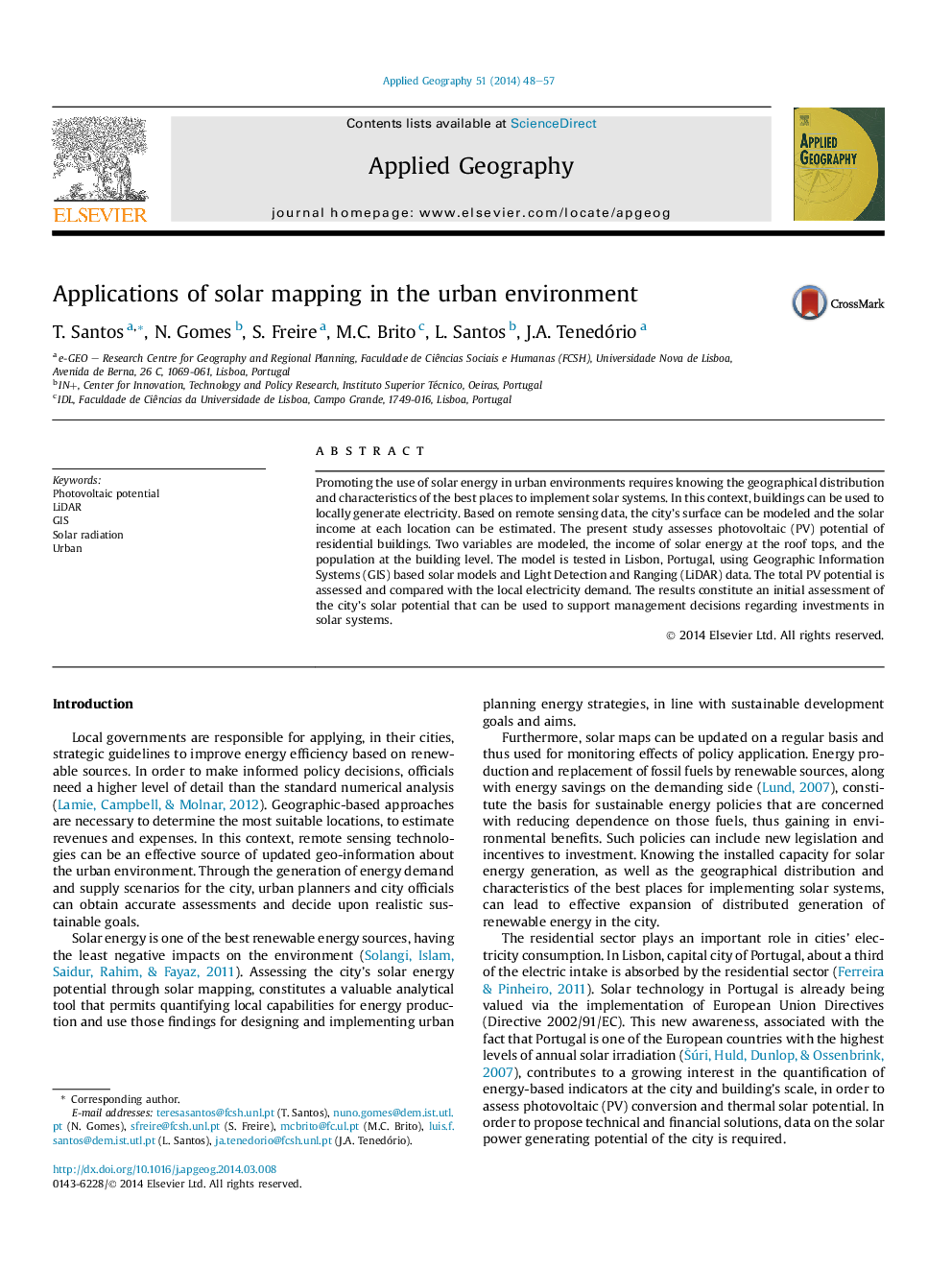| Article ID | Journal | Published Year | Pages | File Type |
|---|---|---|---|---|
| 83345 | Applied Geography | 2014 | 10 Pages |
•Model PV potential using GIS-based models and LiDAR data.•Takes into account area available at each rooftop.•Total PV potential of residential buildings is 25% of the local electricity demand.•Multiple-owner buildings have the higher solar potential in the urban landscape.•Solar energy incentive policies should address this type of buildings.
Promoting the use of solar energy in urban environments requires knowing the geographical distribution and characteristics of the best places to implement solar systems. In this context, buildings can be used to locally generate electricity. Based on remote sensing data, the city's surface can be modeled and the solar income at each location can be estimated. The present study assesses photovoltaic (PV) potential of residential buildings. Two variables are modeled, the income of solar energy at the roof tops, and the population at the building level. The model is tested in Lisbon, Portugal, using Geographic Information Systems (GIS) based solar models and Light Detection and Ranging (LiDAR) data. The total PV potential is assessed and compared with the local electricity demand. The results constitute an initial assessment of the city's solar potential that can be used to support management decisions regarding investments in solar systems.
